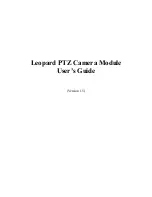
29
CAMERA CARE AND CAUTIONS
1. Your camera is a precision instrument which
requires careful handling. Do not expose it to
shock, liquid, or drop it on the floor.
1) If you use the camera at the seaside or in light
rain, be careful not to get it wet. Also be careful
not to put the camera in places where it will be
easily exposed to sand.
2) Dropping the camera on the floor or striking it
against hard objects sometimes causes trouble
even though it may be in the camera case. Also
do not put the camera in places where it is
exposed to vibrations (such as the trunk of a car).
2. If you are not using your camera for a long time,
keep it where it will be safe from heat, moisture,
dust, and harmful gases (such as naphthalene
which is used in drawers).
3. Since this camera is computer-controlled, it almost
never operates erroneously. If erroneous operation
should occur, remove and then reload the battery.
4. This advanced photo system magnetically records
the information on the film. Therefore, do not
expose film cartridges or a film cartridge loaded
camera to strong magnetic fields.
5. Do not put the camera in a closed car for a long
time.
6. It is recommended that undeveloped film and
cameras containing film are carried as hand
luggage when using aircraft. If included in
checked-in baggage, X-ray inspections may cause
overprinting or other effects.
7. Remove soil and dust from the lens, the AF
window and the finder with an air blower and by
wiping lightly with a piece of soft cloth. If that is not
enough, wipe off gently with Lens Cleaning Paper,
moistened slightly with Lens Cleaning Liquid. Do
not use organic solvents such as alcohol and
benzene.
8. The operating temperature range of the camera is
from –10°C to +40°C.
9. Since the performance of the battery will drop in
cold district, warm the battery by placing it inside
your garments, etc. before use. The performance
of a battery whose performance has temporarily
dropped can be recovered by returning the battery
to normal temperature.


































